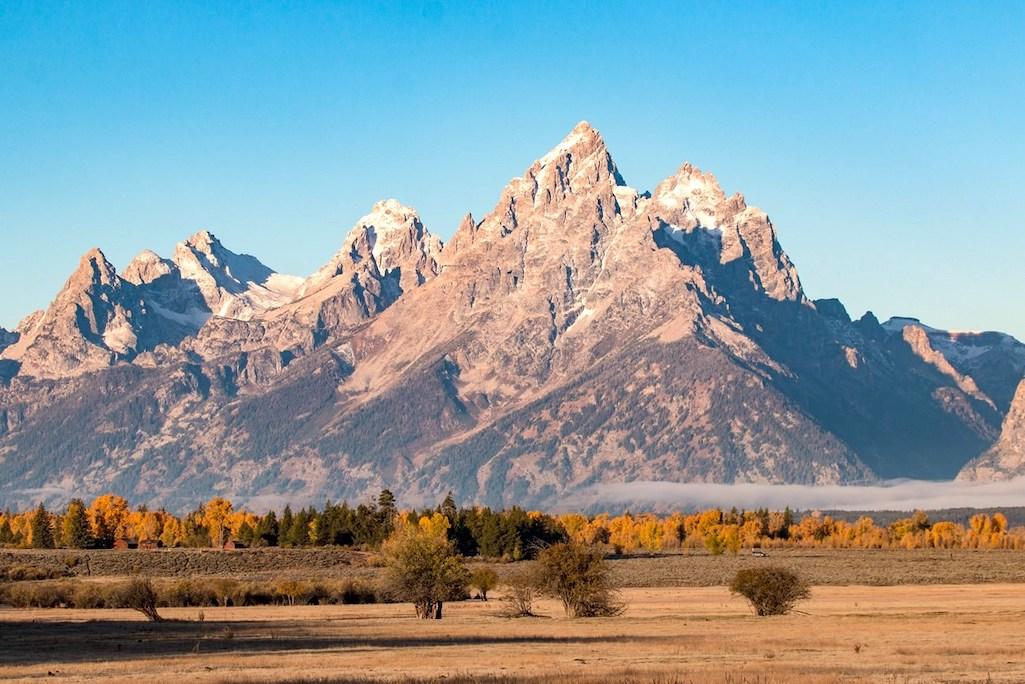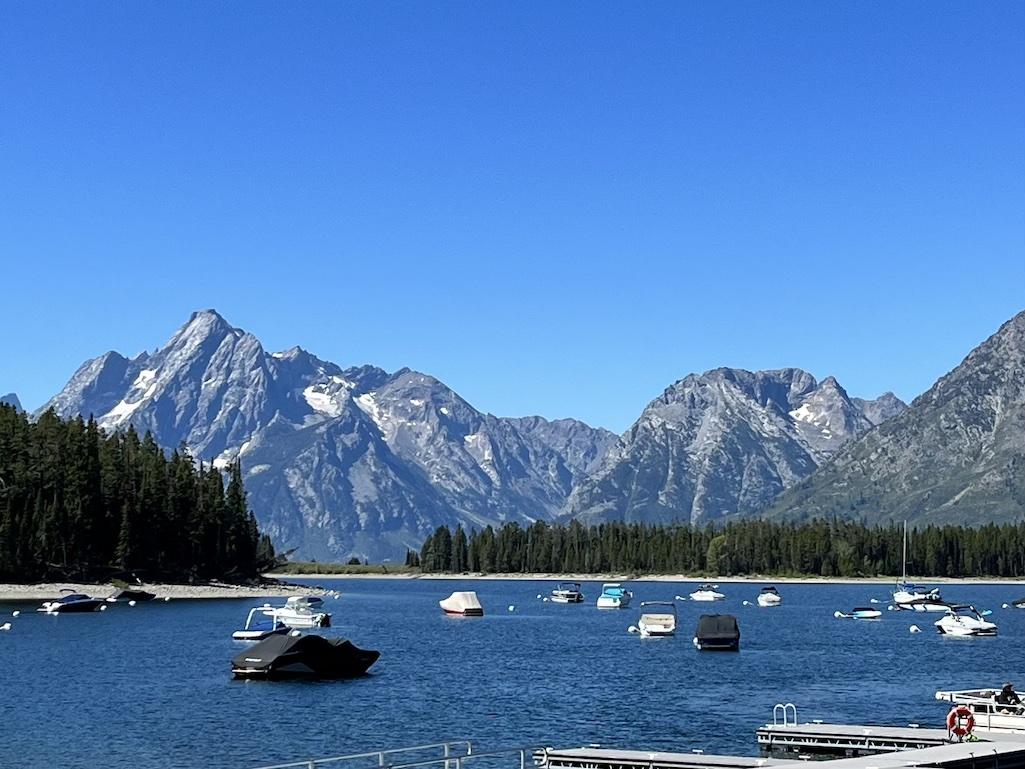
Planning for the future at Grand Teton National Park/NPS file
A long fence line of gneiss, limestone, and dolomite rising to nearly 14,000 feet above sea level, the jagged Teton Range in western Wyoming catches your attention every time you see it, not just the first. The linear range that is much of the state's border with Idaho is captivating, whether you're a climber, skier, hiker, or simply one who marvels at nature.
While the mountains largely have weathered time well, with some relatively minor changes due to rockfalls and glaciers waning of late under climate change, the national park that embraces the mountains and flats, lakes, and streams below them has been impacted by growing numbers of visitors who have pounded trails, strained infrastructure, and crowded prime overlooks and facilities.
They are problems not unique to Grand Teton National Park, but well-known to many other parks. And they might not even be considered problems, but rather well-known and often expected issues that come with the popularity of national parks.
Grand Teton has shared in that popularity. In 1985, when then-Deputy Superintendent Marshall Gingery said national parks were being "loved to death," Grand Teton counted 1.3 million visitors. Last year, 2022, the tally rose to 2.8 million [18,000 a day in summer] after climbing to more than 3.8 million in 2021, the year after the Covid pandemic drove millions into nature. Over the past five years, trail use has grown 44 percent.
Busy, But Not Problematic
But the numbers are not seen as troublesome.
"The numbers that we're currently at are sustainable," Grand Teton Superintendent Chip Jenkins told the Traveler during this week's podcast. "The question is, what will the future bring, right?"
The superintendent and his staff view visitation numbers not "like a thermometer where the number goes up or down ... but more like a balloon because visitation occupies time and space." And through the years visitation trends have changed somewhat and squeezed that balloon into different areas of the park, he said.
"We're seeing more people going on trails and going into the backcountry than just the percentage of increase in terms of visitation," he said. "And we're seeing people recreating differently. We're seeing people behaving differently on the landscape. So we are trying to get a better understanding of what that means in terms of relationships with wildlife, what that means in terms of quality visitor experience, so that we can be thinking about how we adapt our management as we go into the future."
The National Park Service has not stood idly by through the years watching the visitation grow, but has reacted to some of the associated issues and moved proactively to address others.
"I think that the reality is is that the National Park Service has been actively managing visitation in Grand Teton for over 90 years," the superintendent said. "You know, there was a long history of the idea of having the outer park road [U.S. 89/191/26] being the place that was for higher speed transit, where people wanted to go. The inner park road [Teton Park Road] is much slower, more contemplative. You know, in 1971 the park's master plan that was completed actually identified that there was a limit in terms of appropriate overnight accommodations, and actually overnight accommodations were capped in 1971.
"So the number of hotel rooms cabins, the number of campgrounds and campsites, was set at that time, and we continue to manage to that limit," continued Jenkins. "In the 1980s, the park completed a backcountry management plan that codified the use of the backcountry permit, where we have a set number of folks spending the night not just in the backcountry, but by different zones. And then as we roll forward into the '90s, in the 2000s, the Laurance S. Rockefeller Reserve was donated to the park and in the process of doing that, there was a carrying capacity for visitation that was set that was tied to the size of the parking lot there, and we continue to manage to that. On busy days, literally having staff there where we are managing to, once the parking lot is full, one car has to leave before another car can come in and park. String Lake is another place where we continue to adaptively manage and again, the carrying capacity is connected to the size of the parking lot."
With the help of the Grand Teton National Park Foundation, the Park Service nine years ago embarked on an extensive rehabilitation of the Jenny Lake area, from rebuilding the existing trails on the Tetons' flanks to improving visitor facilities and trails along the lake's shorelines. More recently, again with the foundation's help, the park has been preserving history in Mormon Row on the east side the park and currently is improving access to the Snake River for paddlers and anglers.
Day Visits
Somewhat surprising, despite the park's natural grandeur, the bulk of visitation comes in the form of day trips. Only about 15 percent of the park's visitors spend a night in the park, said Jenkins. Many come in from Jackson, Wyoming, to take a hike, paddle, or look for wildlife, or stop on the way to, or from, Yellowstone National Park a bit to the north.
In one context, he explained, visitors might spend 6-8 hours in the park. Looking at it from another perspective, the socio-economic impact, visitors might be in the region for about four days, with time spent in Jackson, in the park, up to Yellowstone, or in the surrounding national forest lands, said the superintendent.
Getting a firmer grip on understanding visitor behavior is something park staff has been concentrating on. The staff continues to evolve its visitor studies to better understand what they're doing and where they're going. One takeaway from those studies is that "(M)ore than half of visitors experience some kind of crowding at key destinations (like Jenny Lake or String Lake) while visiting the park." However, "(O)nly a few visitors report that crowding is a big or extreme problem, but many visitors report that it is a slight-to-moderate issue."

How can the Colter Bay area be improved for a better visitor experience?/Kurt Repanshek
Coming up later this fall is a public comment period on how the popular Colter Bay area might be redeveloped to improve the visitor experience. More than a dozen years ago, in 2012, the National Park Service planned to embark on a similar study, but it never gained traction. Jenkins said the resulting environmental assessment was largely focused on traffic movement and parking issues.
"We're seeing that we need to take a more holistic view at Colter Bay and how we can really try to use that place, in a sense to kind of restore it as one of the primary centers of gravity for a day visit in the park," the superintendent said. "What are the kinds of visitor experience that we want to provide there? Water-based recreation? Access to trails? Of course, high-quality overnight visitation. Seeing whether or not we there's interest in tribes to expand work, to share tribal heritage and culture.
"It was originally designed to be very, very car-centric. And so, if you go to Colter Bay, it feels like you need to be in your car and kind of drive everywhere. And I think we would like to create an experience that makes it much more pedestrian and bike-centric, and encourage people to come, park once, and get out and and move around Colter Bay."
Colter Bay also shoulders the greatest concentration of lodging in the park, from historic log cabins and tent cabins to campgrounds that can handle tent campers, RVers, and even bike campers. Whether the Park Service will closely review those cabins and their amenities, or even expand the number, remains to be seen, although the superintendent said currently there is no discussion about increasing lodging there.
"We are very, very early in the planning process," said Jenkins. "And what we are aiming for is starting in early November through December, we're going to be opening for public scoping. So asking people, what are the topics? What are the issues? What are the opportunities that people see that they would like us to address or explore at Colter Bay? So that'll be a great time for you to be able to submit your comments."
Traveler footnote: Catch our entire conversation in National Parks Traveler Episode 240.



Add comment